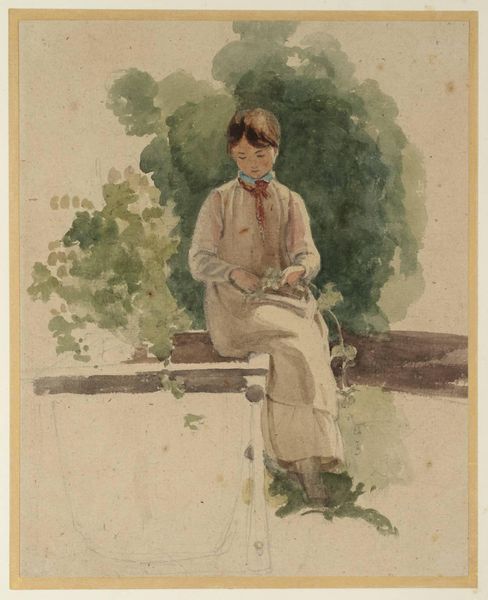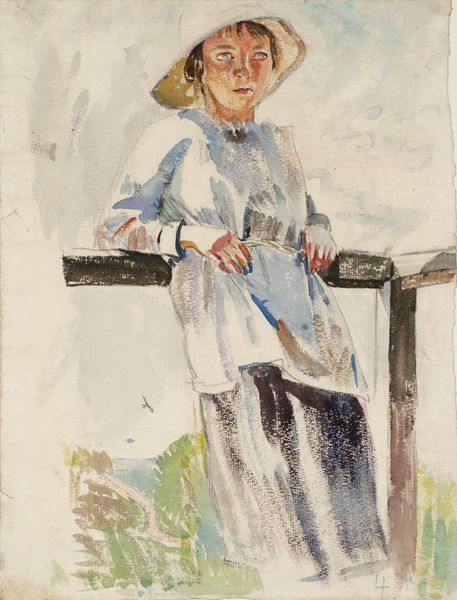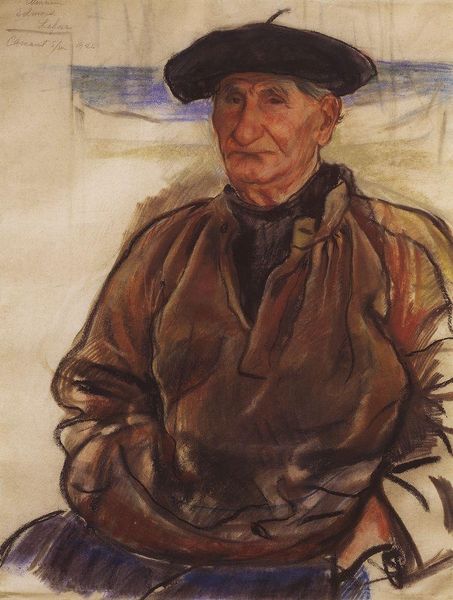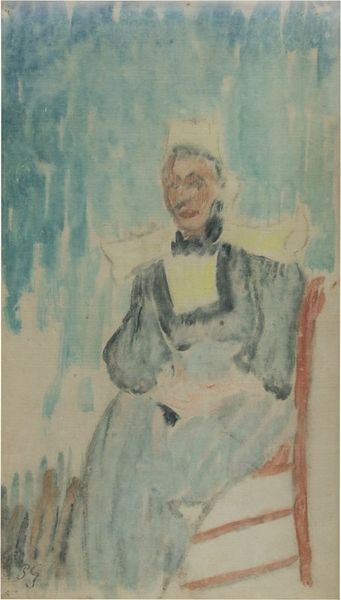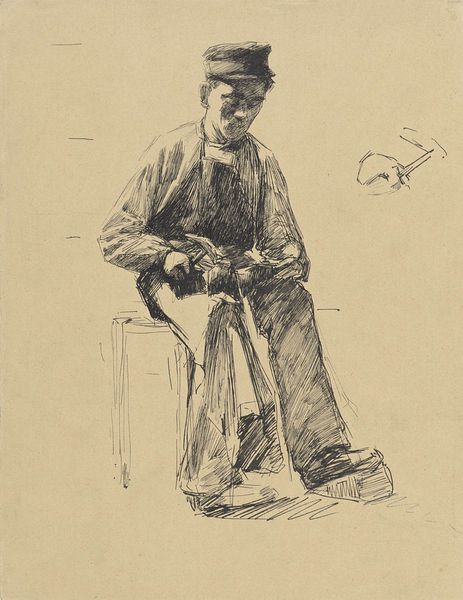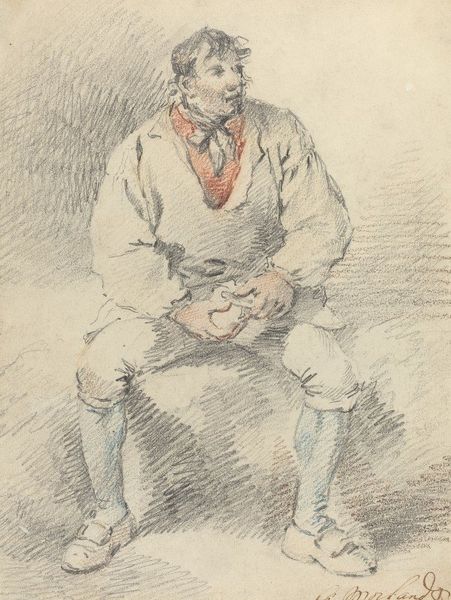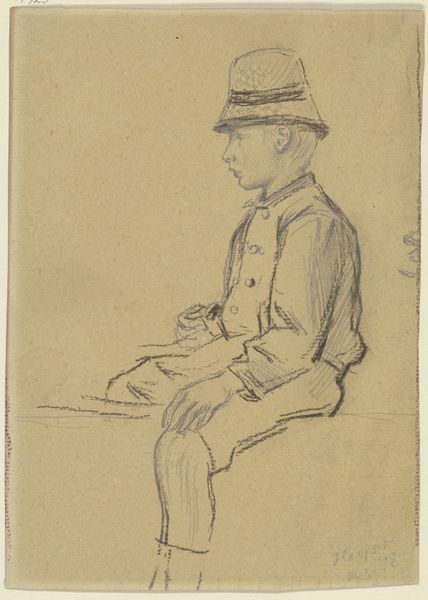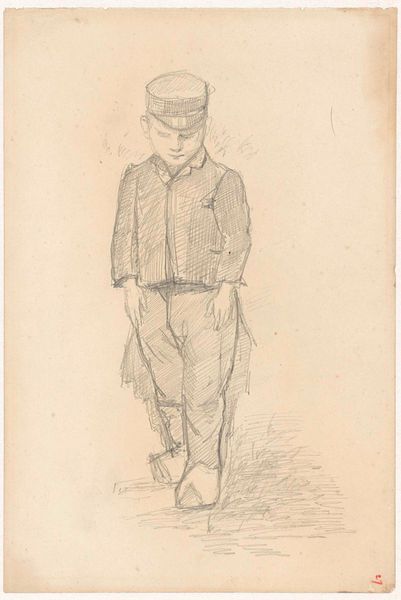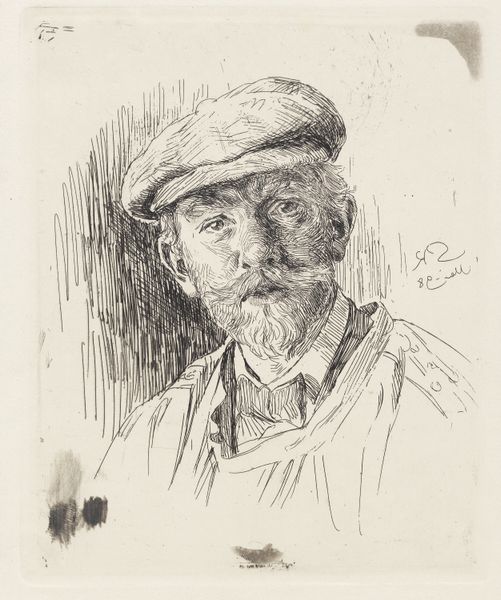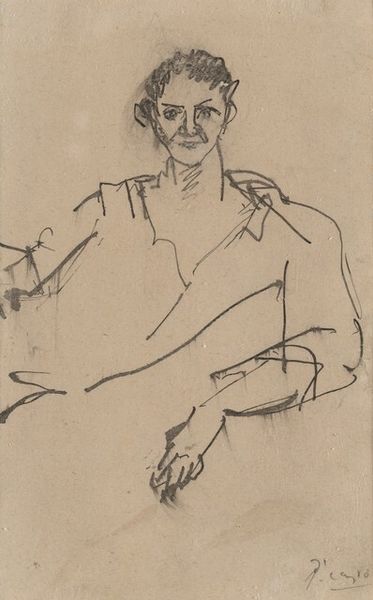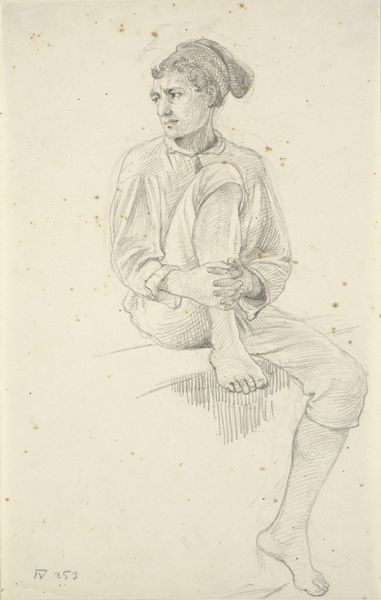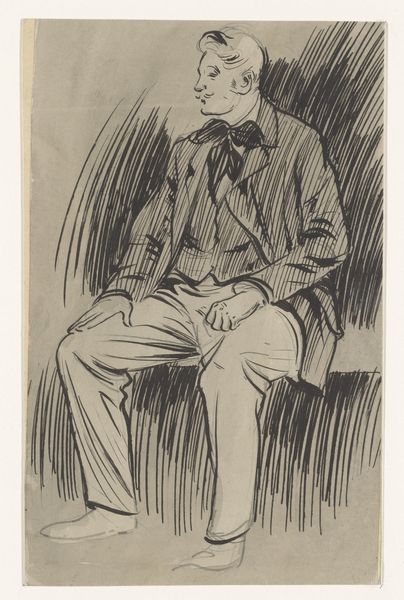
drawing, watercolor, pencil
#
portrait
#
drawing
#
figurative
#
impressionism
#
pencil sketch
#
figuration
#
watercolor
#
coloured pencil
#
pencil
#
watercolor
Copyright: Public Domain: Artvee
Editor: So, this is "Portrait De Louis Pascal," a watercolor and pencil drawing by Henri de Toulouse-Lautrec from 1887. I find it intriguing how unfinished it feels, like we're seeing the bare bones of the artistic process. What's your perspective on this piece? Curator: The seeming incompleteness is precisely where the materialist reading takes root. Look at the exposed underdrawing, the visible process. Toulouse-Lautrec isn’t just presenting a polished likeness. He is revealing the labour involved, the active *making* of an image. What does the quickness of the media--pencil and watercolour--suggest about the speed of production, the economy of means? Editor: That's fascinating. It's like we're witnessing the artist’s thought process unfold on the page. But how does the social context play into this emphasis on materials and production? Curator: Think about Toulouse-Lautrec's position. He depicted the demimonde of Paris, the marginalized. Was his artistic practice itself reflecting, perhaps even subverting, the rigid hierarchies of the art world at the time? The visible 'work' involved suggests a leveling of high art, more in tune with labor, and craft, as a more sincere representation. Does the rawness itself function as commentary on the more "finished" portraits that might conceal production so deliberately? Editor: That's a compelling connection. I hadn’t considered how the very act of revealing the process could be a social statement. It makes you wonder about his relationship to the subject as well – how does representing the act of labor and material in the work relate to representing a specific person? Curator: Precisely. It challenges the idealized portrayal common at the time and forces us to consider what value systems are upheld by what’s being depicted as much as *how* it’s being depicted. What this emphasis helps achieve is allowing other artistic methods or subjects into the fray. Editor: I see now! Thanks, this deeper dive has shifted my understanding significantly. It’s not just about the portrait itself, but about what it tells us about art-making and society. Curator: Indeed, and hopefully encourages one to look more intently at the way things are *made* not merely *what* things are, and their broader connection with culture.
Comments
No comments
Be the first to comment and join the conversation on the ultimate creative platform.
